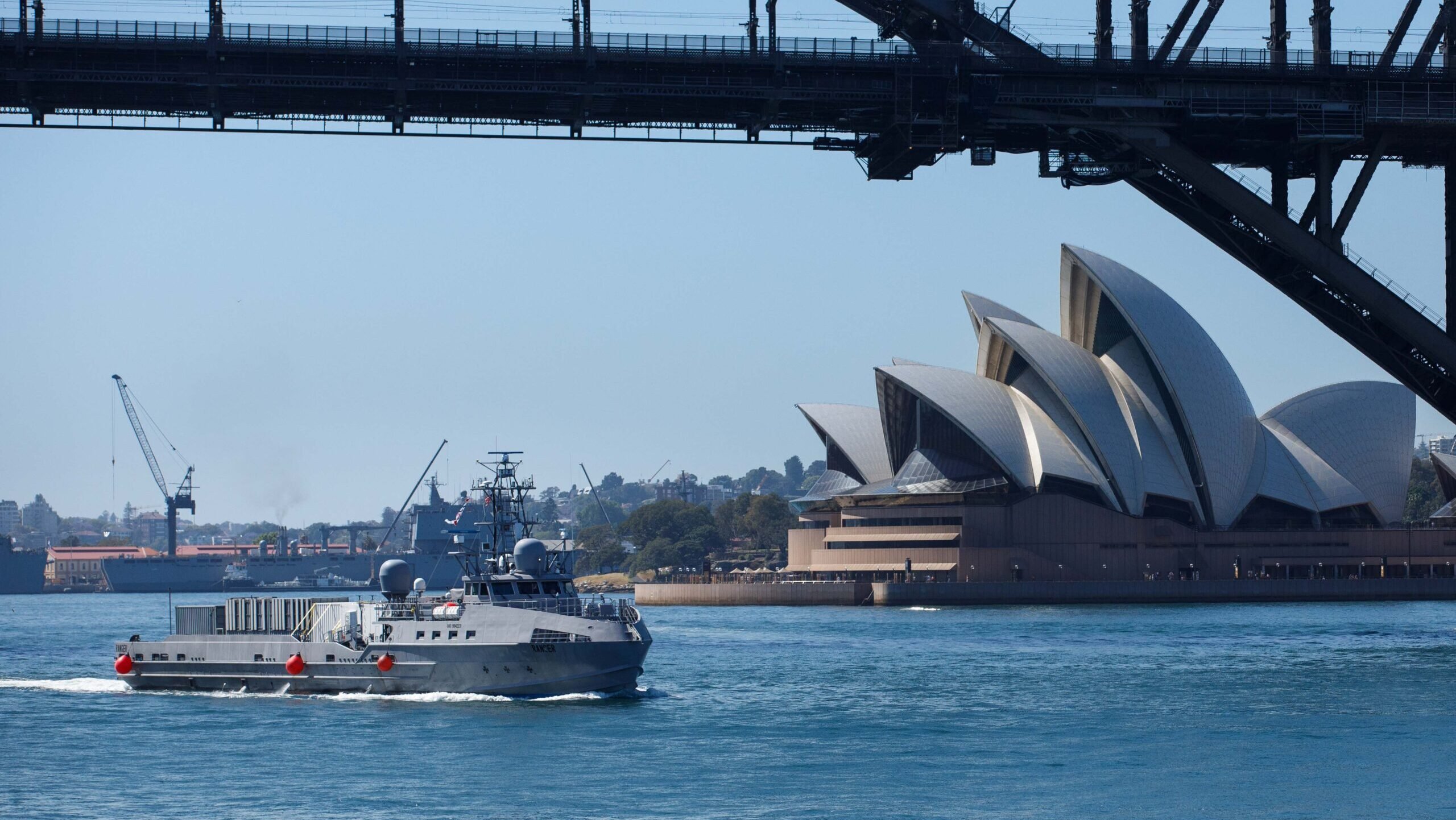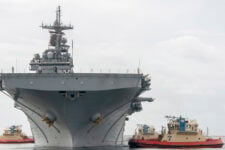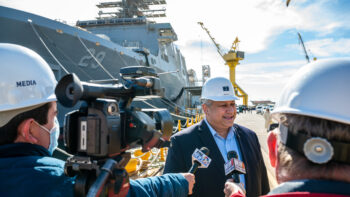
The unmanned surface vessel Ranger transits underneath the Sydney Harbor bridge as part of a scheduled port visit during Integrated Battle Problem (IBP) 23.2, Oct 24, 2023. (U.S. Navy photo by Ensign Pierson Hawkins)
WEST 2024 — The head of US Pacific Fleet today said his command plans to establish its second operational unmanned surface vessel squadron in May, though he kept tight-lipped about what “exquisite capabilities” might be available to the unit.
“This is a uniform capability that we’ll be able to own, operate… [and] can be employed within particular spaces,” Adm. Samuel Paparo told an audience here at West 2024 in San Diego. A “principle element within warfare is the element of operational security. So, our most exquisite capabilities, if I’m doing my job, you won’t [know] about it.”
Paparo also said that in March his fleet would conduct Integrated Battle Problem 24.1. IBP has been a series of naval experimentation events, initiated by former Chief of Naval Operations Adm. Michael Gilday and conducted annually.
The standing up of another unmanned surface vessel squadron in US Pacific Fleet is latest move by the larger Navy to boost the presence of unmanned vessels throughout the fleet. Paparo noted previous IBPs have seen unmanned vessels log thousands of miles at sea over a period of several months.
Paparo also said that IBP is meant to complement rather than compete with other unmanned efforts taking place at US 5th Fleet in the Arabian Gulf, home of Task Force 59, or US 4th Fleet in South America, where Navy leadership formally introduced a cadre of unmanned vessel experts to the command’s staff last year.
Separately, on Tuesday, Marine Corps Lt. Gen. Karsten Heckl told reporters his service would soon test a new unmanned drone designed to stealthily carry two Naval Strike Missiles to Marines ashore without attracting attention.
Heckl did not name the company that produces the drone, except to call them a “mom and pop” shop. He did say the vessels were exceedingly difficult to track because of the minimal wake the vessels produce while gliding through the water.
The Marines expect to test the new drone this month as part of Army-led Project Convergence events.






















